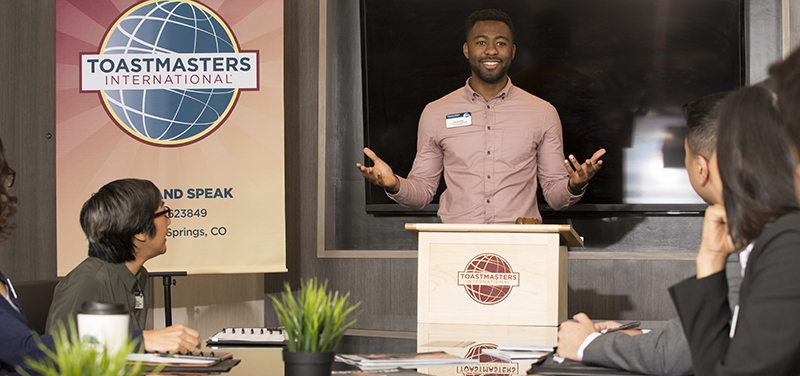
You’ve got just 10 seconds to grab the audience’s attention before they decide to stay with you or tune you out. Here are five (of many) tried-and-true ways to start a speech.
Tell a story
By far the most effective way to open a speech is with a compelling story.
“I was a student returning from a study abroad course in Cairo. Shortly after takeoff, five men carrying guns leapt up from their seats and began shouting at the passengers. Our plane was being hijacked.”
Are you engaged? Do you want to know more? I did. The speaker was shot in the head in the doorway of the plane (which had been forced to land) and pushed out onto the tarmac where she lay for hours while hostage negotiations continued. Her topic was brain injury and fighting back from adversity. I can remember none of her main points, but I’ll never forget her story.
Make a bold statement of your unique point of view (POV)
“I’m here today to talk about a disturbing question, which has an equally disturbing answer. My topic is the secret of domestic violence and the question I’m going to tackle is the one everyone always asks. Why would she stay? Why would anyone stay with a man who beats her?”
That was the opening delivered by Leslie Morgan Steiner in one of the most frequently watched TED Talks. Are you interested? Do you want to know more? Sure you do, so watch her speech.
Ask a question
If you open with a question, use body language to make it clear you actually want an answer. As you ask your question, plant one foot forward and raise the opposite hand high in the air, leaning a little forward toward the audience. This posture invites the audience to respond. Now pause and wait for hands to go up or heads to nod.
Just throwing out a rhetorical question and plowing on without a pause for audience response has no dramatic impact whatsoever and, thus, does not invite your audience into your POV journey.
Get the audience to laugh
When I first started as a professional speaker, I asked the world-famous motivational speaker Zig Ziglar how he opened his speeches. He said, “I try to make them laugh in the first 10 seconds. If they laugh, they’ll like you.”
“How do you do that?” I asked.
“Well, I have three or four standard opening lines. For example, I say ‘I had a joke that was so funny it would make your hair fall out’—I pause and look around the room for balding men—‘but I see many of you have already heard it.’ You can use that one if you want.”
Well, indeed I did use it, until I realized that while the joke was great for Zig, a member of the aging-males-with-thinning-hair demographic, it sounded more like male-bashing when a woman said it.
Sadly, there is no one-size-fits-all opening joke.
Ask the audience to visualize something
“Imagine you are driving down a two-lane country road. It’s early in the morning so the air is cool, crisp, clean and fragrant with the smell of freshly mown hay. You’re sipping a cup of coffee and feeling at peace with the world. Your cell phone breaks the silence and you distractedly dig for it in the bottom of your purse. Suddenly BAM! You hit an elephant.”
The magic of starting a story with the word “imagine” is that it invites the audience into your world. Using the pronoun “you” and the present tense “you are driving” (instead of “I was driving”), and describing the setting in terms of the five senses, places each listener squarely in the middle of the scene.
An interesting opening introduces your audience to your unique point of view, gives them an idea of where you’re going to take them and invites them to join you on the journey.
Anne Barab, DTM, AS is a member of the Richardson Noon Toastmasters and Park Central Toastmasters clubs in Texas. She is the author of The Sooner You Laugh the Faster You Heal: How to Challenge the Assumptions that Ruin Your Life. Visit www.annebarab.com.



 Previous
Previous
 Previous Article
Previous Article